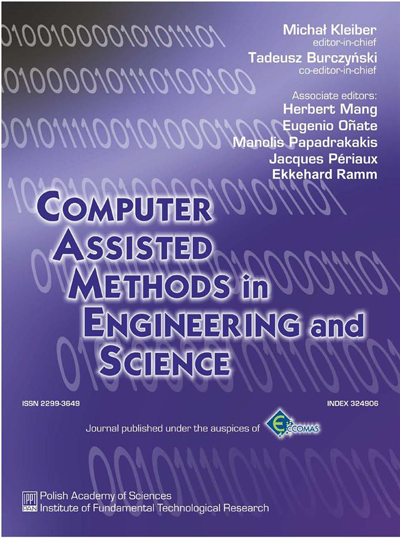Application of transfer relations to structural analysis of arch bridges
Abstract
Transfer relations, representing analytical solutions of the linear theory of slender circular arches, have facilitated structural analysis of segmented tunnel linings. This is the motivation to apply such relations to two examples concerning circular arch bridges, carrying the bridge deck by means of equally spaced hangers. At first, the number of hangers is optimized in order to minimize the maximum bending moment of the arch, thus allowing the latter to come as close as possible to the desired thrust-line behavior. Secondly, analytical solutions for a “uniform temperature change” are derived. They are used to show that a temperature increase by 30 K results only in minor redistributions of the inner forces but in significant additional deflections. The two examples have shown that the transfer relations are useful for structural analysis of circular arch bridges, because they reduce the complexity of the analysis to that of structural systems consisting of straight beams.
Keywords
segmented tunnel, predesign, first-order arch theory, transfer matrix,References
[1] J. Cheng. Optimum design of steel truss arch bridges using a hybrid genetic algorithm. Journal of Constructional Steel Research, 66(8):1011–1017, 2010. http://www.sciencedirect.com/science/article/pii/S0143974X10000775.[2] C. L. Dym. End-loaded shallow curved beams. Journal of Structural Engineering, 137(7):782–784, 2011. https://doi.org/10.1061/(ASCE)ST.1943-541X.0000396.
[3] C. L. Dym and I. H. Shames. Solid mechanics: Variational approach. McGraw-Hill, New York, 1973.
[4] C. L. Dym and H. E. Williams. Stress and displacement estimates for arches. Journal of Structural Engineering, 137(1):49–58, 2011. https://doi.org/10.1061/(ASCE)ST.1943-541X.0000267.
[5] G. F. Fox. Arch bridges. In W.-F. Chen and L. Duan, editors, Bridge engineering handbook, chapter 17, pages 17/1–17/12. Boca Raton, CRC Press, 1st edition, 2000. http://www.crcnetbase.com/isbn/9781420049596.
[6] J. Gere and B. Goodno. Mechanics of materials. Cengage Learning, Stanford, CT, 8th edition, 2012.
[7] W. Hemp. Michell framework for uniform load between fixed supports. Engineering Optimization, 1(1):61–69, 1974. http://dx.doi.org10.1080/03052157408960577.
[8] C. Melbourne. Design of arch bridges. In G. Parke and N. Hewson, editors, ICE Manual of Bridge Engineering, pages 305–344. London: Thomas Telford, 2st edition, 2008.
[9] T. Mura. General theory of eigenstrains. In Micromechanics of defects in solids, pages 1–62. Springer, 1982. https://doi.org/10.1007/978-94-009-3489-4_1.
[10] Y.-L. Pi and M. A. Bradford. In-plane strength and design of fixed steel I-section arches. Engineering Structures, 26(3):291–301, 2004. https://doi.org/10.1016/j.engstruct.2003.09.011.
[11] J. Salencon. Handbook of Continuum Mechanics: General Concepts-Thermoelasticity, Springer, 2001. https://doi.org/10.1016/S0141-0296(99)00032-2.
[12] T. Smit. Design and construction of a railway arch bridge with a network hanger arrangment. Master thesis, Delft University of Technology, Delft, The Netherlands, May 2013. http://homepage.tudelft.nl/p3r3s/MSc_projects/ reportSmit.pdf.
[13] J. Wheeler. An elementary course of civil engineering for the use of cadets of the United States Military Academy. J. Wiley & Sons, 1876.
[14] T. Yabuki and S. Kuranishi. An ultimate strength design aid for fixed-end steel arches under vertical loads. Proceedings of the Japan Society of Civil Engineers, Structural Engineering/Earthquake Engineering, 4(1):115–123, 1987. https://www.jstage.jst.go.jp/article/jscej1984/1987/380/1987_380_141/_pdf
[15] J.-L. Zhang, C. Vida, Y. Yuan, C. Hellmich, H. A. Mang, and B. Pichler. A hybrid analysis method for displacement-monitored segmented circular tunnel rings. Engineering Structures, 148:839–856, 2017. https://doi.org/10.1016/j.engstruct.2017.06.049.




